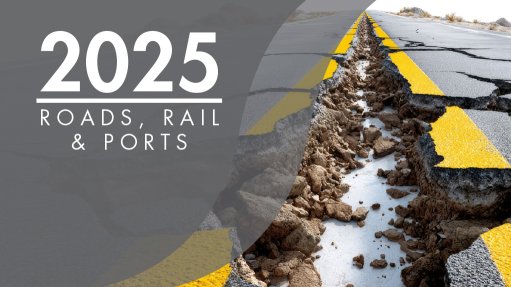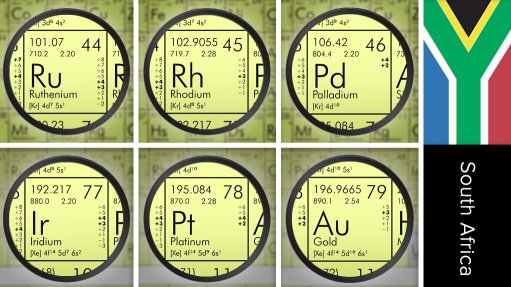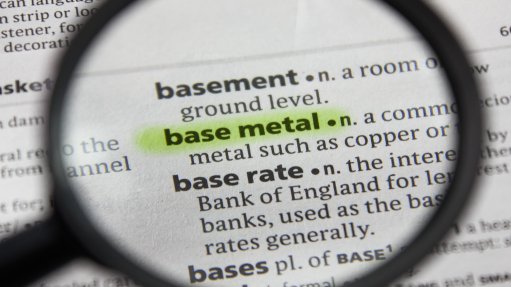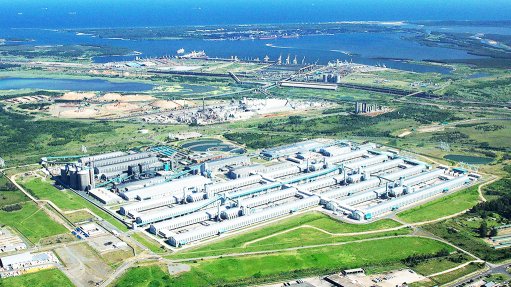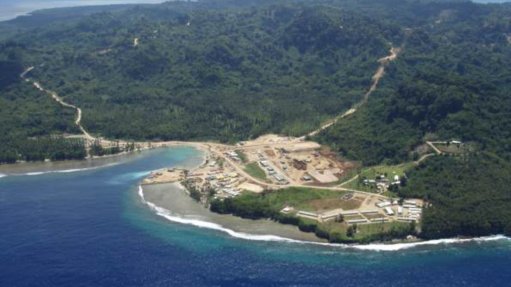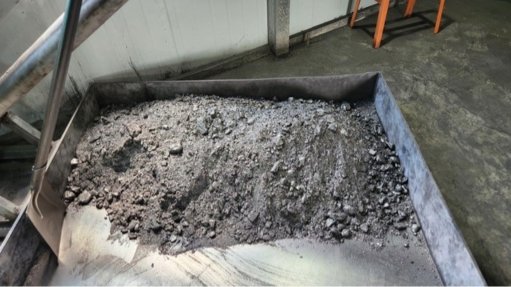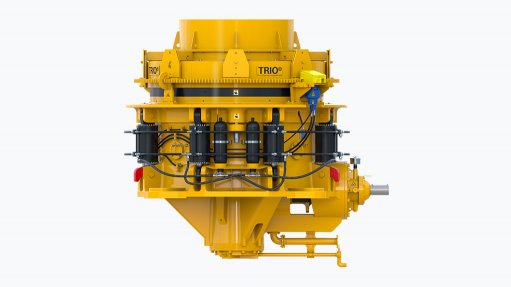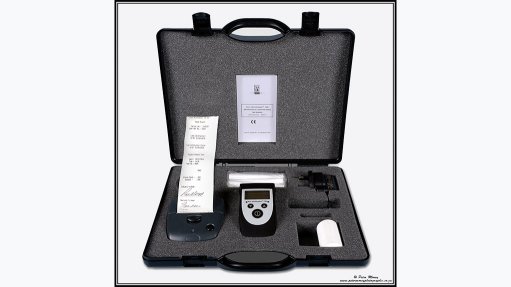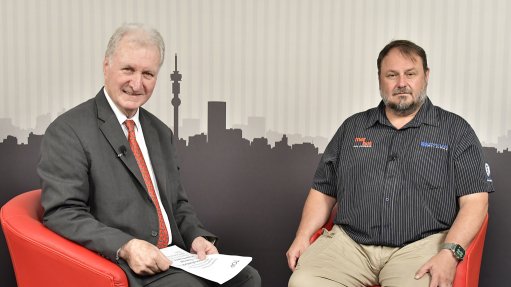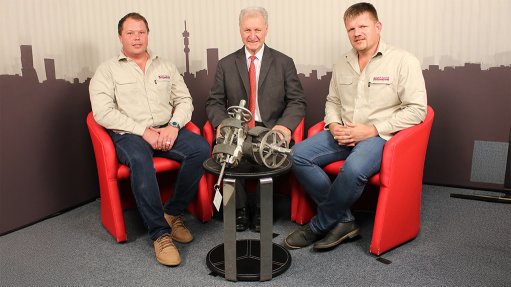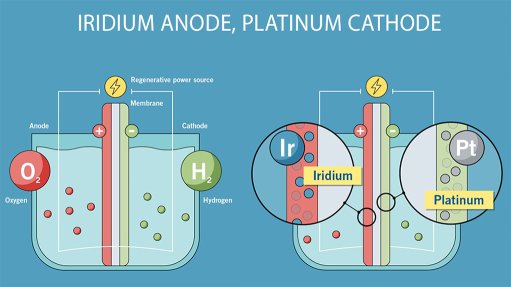Junior Mining Exploration Fund delivering meaningful progress

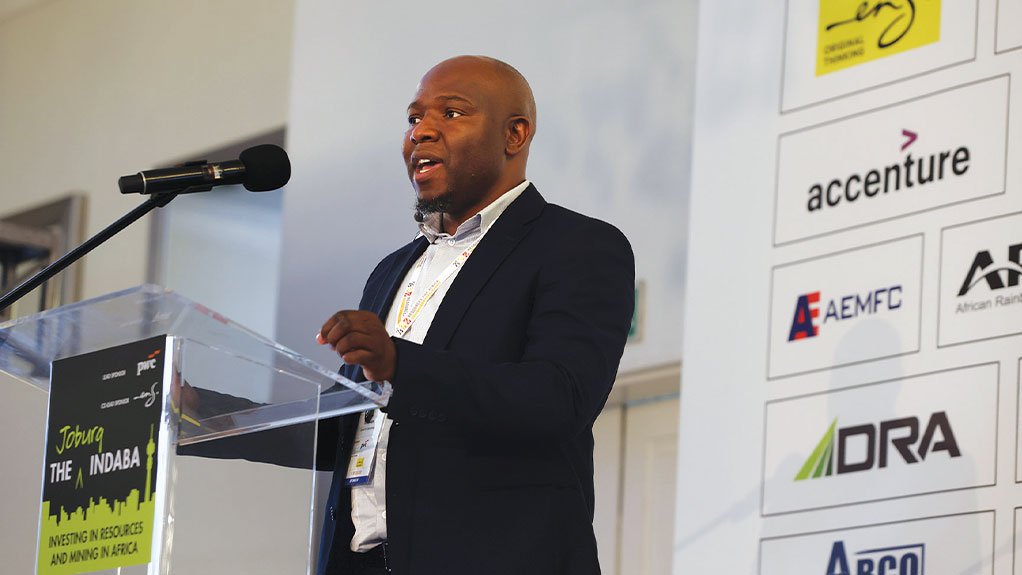
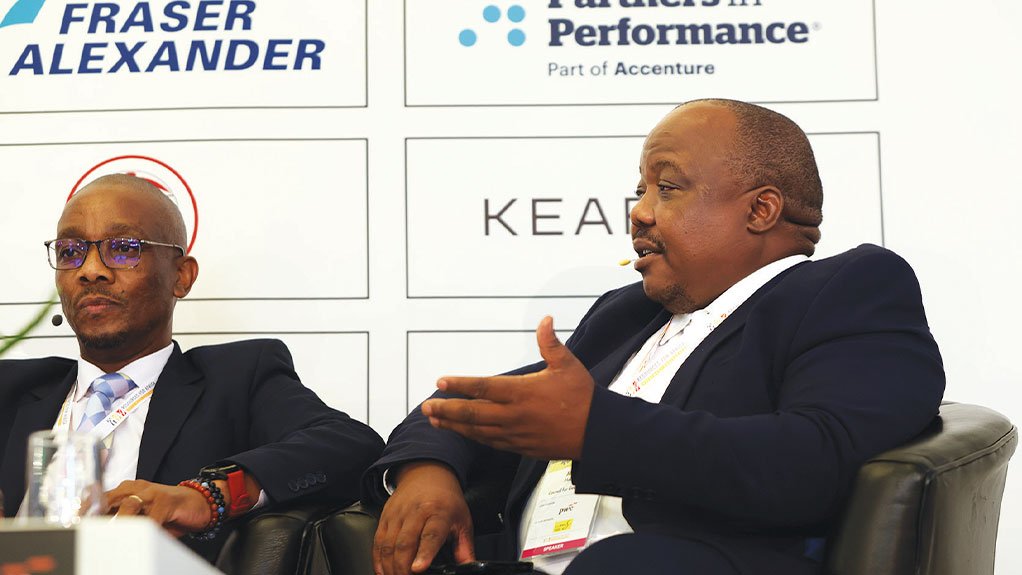
Council for Geoscience specialist scientist Dr Asinne Tshibubudze
CGS CEO Mosa Mabuza
After a successful first window of funding disbursed through the Junior Mining Exploration Fund (JMEF), the Council for Geoscience, together with the Industrial Development Corporation (IDC) and the Department of Mineral and Petroleum Resources (DMPR), are calling for the next round of applications.
The first window, with an allocation of R160-million, had eight junior mining applicants ultimately selected out of 117 applications for funding to advance geological mapping and other exploration activity.
The first funding window focused on copper, nickel, graphite, lithium and rare earths applicants; with some projects having progressed to geophysical data acquisition and targets identified for drilling, while others are securing land use agreements before funding is disbursed.
The first round of projects are located in Limpopo, Mpumalanga, North West, the Free State and the Northern Cape, with the Limpopo and North West projects focused on copper, the Mpumalanga project focused on rare earths and lithium, the Free State project focused on rare earths such as monazite and the Northern Cape projects focused on copper, nickel, zinc and lithium.
The second window has been allocated R240-million with a broader scope of minerals that are eligible – tin, tungsten, copper, lithium, uranium, gold, antimony, arsenic and fluorspar. The deadline for applications under the JMEF’s second funding window is set for October 31.
The JMEF was established in 2023 with a capitalisation of R400-million to help attract exploration investment and reignite mineral discoveries, with the aim of optimally developing the country’s abundant mineral resources.
The fund enables junior miners to access mine ore bodies and promotes economic inclusion that will support equitable economic growth in the sector.
Some of the applicant requirements include unlisted private companies with valid prospecting or mining rights that require between R10-million and R50-million of funding for early-stage exploration activities such as drilling and logging, rock sample analysis, geophysics surveys, geochemistry studies, geotechnical assessments, geohydrological studies, environmental studies and other geological expertise that may include data interpretation and consolidation into a Competent Persons Report.
The applying entity must be operating in greenfield or brownfield exploration activities within South Africa and have a combined direct and/or indirect ownership by black persons of at least 51%.
Notably, the entity or any controlling shareholder should not have revenue generated from other mining rights. The fund will also consider candidates requiring more advanced exploration needs including resource definition, geotechnical studies, metallurgical testing, environmental impact assessments, permitting, and regulatory compliance and feasibility studies. Applications must be submitted through email to jmef@idc.co.za.
Applicants who do not have access to email are encouraged to go to regional offices of the DMPR or IDC for assistance to email their applications. During a session at Joburg Indaba on October 8, Council for Geoscience specialist scientist Dr Asinne Tshibubudze said the JMEF provides grant funding that is convertible to equity when a viable orebody is discovered, with the rate of conversion from grant to equity being limited to 49% and based on a fair valuation of the deposit and on a case-by-case basis.
He explained that CGS uses historical data and new datasets to delineate areas of interest together with the junior mining companies, with localised and regional mapping undertaken to identify larger zones and scopes of mineralisation. In the Free State, for example, CGS uses drones for radiometric data gathering to delineate areas of interest.
Tshibubudze expressed confidence in the six months of implementation of the JMEF so far, saying progress has been fruitful and meaningful with the applicants, particularly the projects that have identified drill targets for resource definition and continuation testing. In a panel discussion hosted at Joburg Indaba on exploration and what would grow the mining sector of South Africa, CGS CEO Mosa Mabuza pointed out how too many prospecting rights are sterilising exploration if they are not being actively explored.
He would rather see less prospecting rights with more activity, emphasising a qualitative over a quantitative approach to prospecting rights. He suggested that DMPR could rather extend the window of exploration on prospecting rights that are being used to support companies that are actively developing resources.
Mabuza called for deliberate investment in minerals research, especially to apply new technology and methods on historical deposits that had limited exposure to modern exploration techniques. He also encouraged government to pursue “win-win” relationships with developed countries to integrate value chains.
Mabuza is of the view that developed and developing countries can, through integrated value chains, realise mutual benefits and accelerate development across economies. First, however, it is necessary to determine the extent of minerals that the country has to offer and which ones can contribute to national development goals.
For this, serious exploration efforts are required, more than what is currently being conducted – not only in South Africa, but in more African countries. It is estimated that only 20% of South Africa has been mapped at a geophysical level. This while Africa’s share of global exploration spending has declined from 16% in 2004 to 10.4% in 2024, despite offering some of the highest returns per dollar spent.
For context, South Africa’s real capital formation in mineral exploration was R779-million in 2024, according to Statistics South Africa, which marked the lowest level in the dataset since 1993 and half the 2018 figure. In 2018, exploration gross fixed capital formation was R1.6-billion, marking a 52% real term collapse by 2024. Mabuza pointed out how innovative funding partnerships can solve for exploration gaps, citing JMEF as a tangible example.
“The further success of this fund would ensure greater appetite and enthusiasm by investors.” In response to another question raised about South Africa’s critical minerals approach and investment sentiment in the mining sector, Mabuza said the country tends to agonise more than it organises, suggesting that stakeholders work so well in times of crisis that critical minerals investment should well be treated as a crisis to have companies collaborate and solve uncertainties.
He motivated that minerals exploration is an untapped opportunity for more development finance institutions to get involved in, particularly since geological mapping goes beyond mining potential and feeds into climate change mitigation and energy security. “Geological mapping is necessary to map energy requirements and providing a better understanding of how many minerals will be needed amid the global energy transition,” Mabuza said.
He added that mapping allows countries to quantify the quantum of minerals that will be needed between now and the timeframe that the world has committed to for net zero, “and that gives us a sense of delineating what will constitute the exploration boom”. Mabuza further highlighted how the discovery of one single resource can be defining for a country such as South Africa in a global supply chain.
For example, a 260-million tonnes graphite resource having been identified in the country can position South Africa as a major graphite supplier for electric vehicles globally. In turn, this could trigger development in other sectors such as skills and education, manufacturing and logistics.
Mabuza said CGS has a decades-long track record of undertaking various integrated and multidisciplinary geoscience projects that have aimed to produce high-quality geoscientific data. He concluded by reaffirming that CGS will continue to promote and support sustainable resource exploration towards the continued prosperity of South Africa’s 140-year-old mining industry.
Article Enquiry
Email Article
Save Article
Feedback
To advertise email advertising@creamermedia.co.za or click here
Press Office
Announcements
What's On
Subscribe to improve your user experience...
Option 1 (equivalent of R125 a month):
Receive a weekly copy of Creamer Media's Engineering News & Mining Weekly magazine
(print copy for those in South Africa and e-magazine for those outside of South Africa)
Receive daily email newsletters
Access to full search results
Access archive of magazine back copies
Access to Projects in Progress
Access to ONE Research Report of your choice in PDF format
Option 2 (equivalent of R375 a month):
All benefits from Option 1
PLUS
Access to Creamer Media's Research Channel Africa for ALL Research Reports, in PDF format, on various industrial and mining sectors
including Electricity; Water; Energy Transition; Hydrogen; Roads, Rail and Ports; Coal; Gold; Platinum; Battery Metals; etc.
Already a subscriber?
Forgotten your password?
Receive weekly copy of Creamer Media's Engineering News & Mining Weekly magazine (print copy for those in South Africa and e-magazine for those outside of South Africa)
➕
Recieve daily email newsletters
➕
Access to full search results
➕
Access archive of magazine back copies
➕
Access to Projects in Progress
➕
Access to ONE Research Report of your choice in PDF format
RESEARCH CHANNEL AFRICA
R4500 (equivalent of R375 a month)
SUBSCRIBEAll benefits from Option 1
➕
Access to Creamer Media's Research Channel Africa for ALL Research Reports on various industrial and mining sectors, in PDF format, including on:
Electricity
➕
Water
➕
Energy Transition
➕
Hydrogen
➕
Roads, Rail and Ports
➕
Coal
➕
Gold
➕
Platinum
➕
Battery Metals
➕
etc.
Receive all benefits from Option 1 or Option 2 delivered to numerous people at your company
➕
Multiple User names and Passwords for simultaneous log-ins
➕
Intranet integration access to all in your organisation






